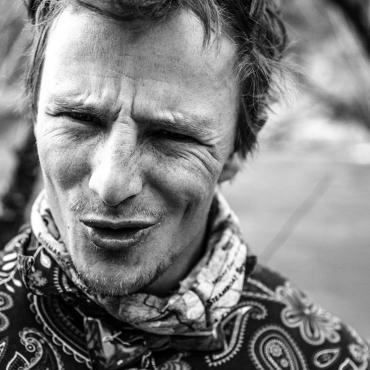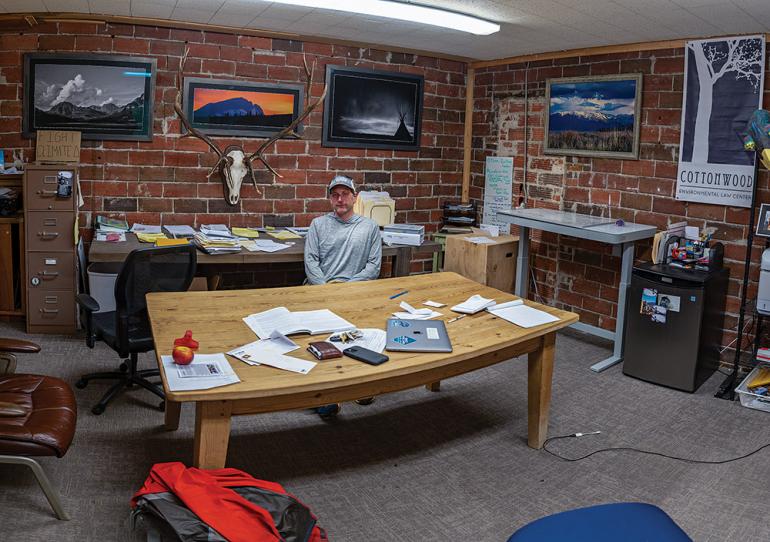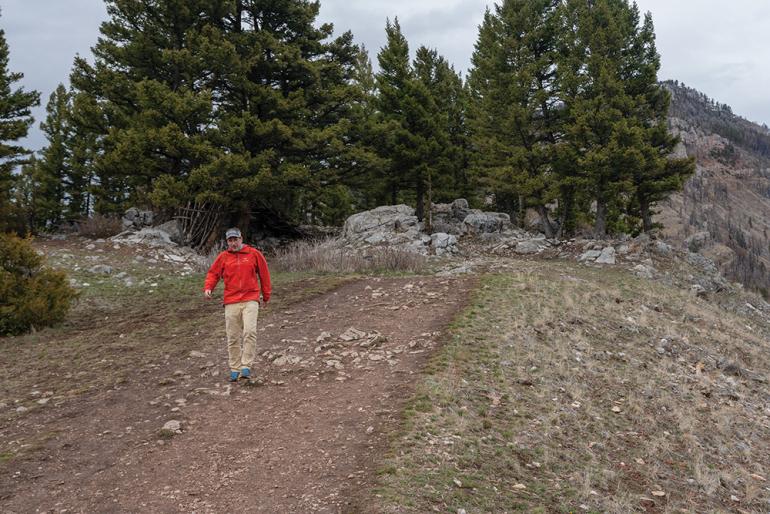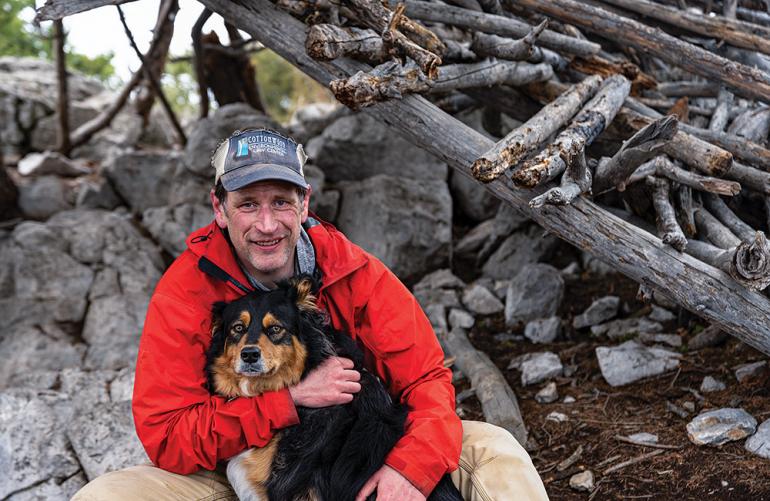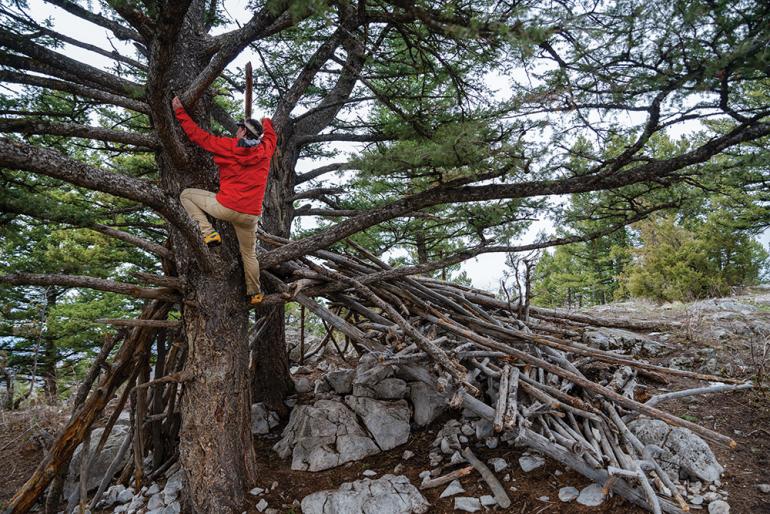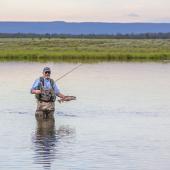Against the Grain
Unveiling and enforcing with John Meyer.
In a place like Bozeman, ignorance can be bliss. The Gallatin flows fast in the spring, Big Sky has powder skiing in the winter, and our high mountains and cool rivers offer respite from the summer heat. Life is pretty good. At least that’s how it seems.
But dry spells are getting longer, cold snaps becoming fewer, and the demand for resources is increasing with our population. We know all this, but we’re also prisoners to human nature: unless something affects us directly and immediately, it’s easy to brush aside. At best, we assume that fixing a problem is possible while still feeding the machine that caused it in the first place.
As appealing as it is to look away and just go with the flow, there are people out there hell-bent on enforcing environmental accountability. People leading the charge of resistance against affluent corporate despotism. One of these souls is John Meyer, founder and head counsel of Cottonwood Environmental Law Center.
John was born in Indiana, but came west in 1999 for college. He studied biology and Spanish at the University of Montana before working for the Forest Service as a botanist for two summers in the northwest corner of the state. His job entailed marking timber sales and surveying for rare plants. One day, while walking around in a recent burn in the Seeley-Swan Valley, he discovered a spotted deer fawn curled up in a burned-out tree stump. At the time, senator Conrad Burns was advocating to salvage the area through logging so it “wouldn’t go to waste.” “I sat there looking at that baby fawn and I realized that the forest wouldn’t go to waste if we didn’t cut it down,” John recalls. “This was providing good habitat. That’s when I decided to go to law school.”
After two years at Vermont Law School, John finished his degree at the University of California, Hastings. He started Cottonwood Law immediately afterward, in 2009.
John is lean and wiry and a bit frazzled from over a decade of courtroom battles. On any given day he could be prepping for arguments, outlining upcoming trials, researching, filing lawsuits, or expanding his outreach. He jokes (maybe not so much) that he works seven days a week. Outside of a board of directors, a few members, and the occasional intern, he’s a one-man band. And there’s no shortage of work to be done.
Cottonwood currently has a fleet of cases in different stages of litigation. There’s the 1986 case against the Custer-Gallatin for not considering climate change in their forest planning with regards to logging old-growth forests. John asserts that there are current timber sales being approved under a plan that doesn’t address climate change. He has another lawsuit with the Forest Service over their 2022 plan failing to address it as well.
John is firm, stubborn, and frustrated; he’s convinced that the majority of conservation efforts are simply band-aids that fail to address a larger problem.
There’s the Clean Water Act case with Big Sky Water & Sewer District, Cottonwood alleging that Big Sky’s holding ponds are leaking thousands of gallons of partially-treated sewage into the West Fork of the Gallatin, every day. In an April trial, the sewer district admitted to leaking 250,000 gallons total in 2020. But under this methodology, John and a hydro-geologist calculated the numbers for previous years to be much higher—into the tens of millions for 2018 and 2019.
He’s got the case against Boyne Resorts for overirrigating the Big Sky golf course with treated sewage. He recently filed a second Clean Water Act suit against the Yellowstone Club and Spanish Peaks Mountain Club for overirrigating their golf courses, too. According to John, this wastewater seeping is the primary reason for the unprecedented increase in algae blooms in Gallatin Canyon.
He’s busy attempting to get the Gallatin designated as an Outstanding Resource Water (ORW). No river outside of a national park has achieved such protection. This designation would prevent future permits from allowing point-source pollution to enter the Gallatin River, as well as any tributary that feeds into it. “All the ORW says is that you don’t have the right to pollute public water,” John says. “I don’t think wanting access to clean water is all that radical.”
John sees these partnerships—collusions between environmental groups and large private developers such as the Yellowstone Club—as a way to make ourselves feel better, but overall ignoring the elephant in the room.
But this would have some serious repercussions. Opponents point vaguely to the possibility of preventing future restoration work from being done. But the big one would be limited development, which, if you work in Big Sky, is bad for business. The other two types of protective measures being proposed are Wild & Scenic and Impaired Waterway. While the former prevents dams from being built and the latter addresses water quality, you can’t ignore the irony between the names. At least John can’t.
“We could have protected this thing permanently and it would’ve been in really good shape 15 years ago,” he says. “It wouldn’t have been “impaired,” there wouldn’t be algae problems, and we wouldn’t have groups trying to designate it as both Wild & Scenic and as Water-Quality Impaired. I mean, what the hell are we doing here?”
With all of his cases, John is firm, stubborn, and frustrated; he’s convinced that the majority of conservation efforts are simply band-aids that fail to address a larger problem. His lawsuits are contentious, even with environmental groups that advocate for the same values he preaches: clean air, clean water, healthy forests, good habitat, and so forth.
His work interrupts collaborative efforts, throwing a wrench in the works of those trying to come to bipartisan resolutions. John sees these partnerships—collusions between environmental groups and large private developers such as the Yellowstone Club—as a way to make ourselves feel better, but overall ignoring the elephant in the room. “All these groups are based on the idea that we can continue to grow and develop and consume,” he says. “I don’t understand what there is to collaborate on.”
John isn’t trying to convince himself that the world can be a better place, and he won’t bow to powerful special interests under the guise of collaboration.
One of John’s most memorable cases was his first one. It was a Freedom of Information Act (FOIA) case regarding Canadian lynx habitat. He won, acquired the information, then used it several years later to win what he refers to as a “massive case” regarding all critical habitat across three states and 12 million acres of Forest Service land.
His victories haven’t come without subsequent losses, though. Immediately after winning the lynx case, Montana senators lobbied to modify the Endangered Species Act to no longer require that old forest plans be reviewed for endangered species when a new species is listed. The lesson he took away was that he not only had to win in the court of law, but also in the court of public opinion: the only way to keep the lawmakers in check is to win over their constituents.
Outside the court (both law and opinion) John is a typical Montana outdoorsman. He hunts, skis, mountain bikes, and runs. He has dreams of climbing the fabled Beckey-Chouinard route in British Columbia before he gets too old. Along with his wife and twin boys, he has friends that he does these things with, some of whom have very different opinions from him. “We don’t talk about the cases on hunting trips,” John says, chuckling.
That said, John is not afraid of ruining a relationship if need be. He calls bullshit when he sees it. He’s an outsider by design, a lone wolf with a motive. An underdog. But he’s under no illusions. He isn’t trying to convince himself that the world can be a better place, and he won’t bow to powerful special interests under the guise of collaboration. And though the obstacles seem at times insurmountable, he carries himself with confident optimism. His cases are strong, he says, and when he wins, it will be for the rivers, the forests, the wildlife—and the people, even if he refused to collaborate with them.
To view John’s work, and to sign the petition to have the Gallatin River designated as an Outstanding Resource Water, go to cottonwoodlaw.org.


